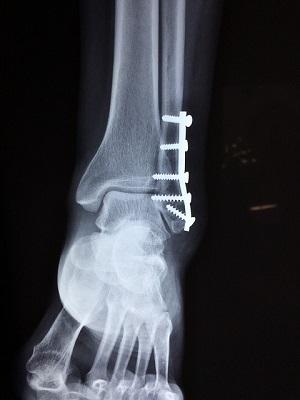- July 5, 2017
- Emily Vyverberg, PharmD, Staff Pharmacist
- Healthy Living

When most people think of strength training, they think of muscle-bound men grunting while lifting several hundred pounds at a time.
While this does happen in some cases, strength training can help promote a healthy lifestyle for everyone.
The health benefits gained by strength training can be numerous if proper technique is used.
With that in mind, strength training can cause injury if safety precautions are not emphasized.
This brings up an interesting question: Is strength training more harmful or helpful?
The Good
Builds Muscle
It’s no secret that the top benefit of strength training is the ability to build muscle.
Having strong muscles can drastically improve your health and quality of life.
Stronger muscles will allow you to move better, lift heavy objects, and effectively exert strength in many different situations.
Burns Fat
Just like any other form of exercise, strength training helps to burn calories.
When you use your muscles, they break down, causing your body to use energy.
In turn, your body will burn fat.
High-intensity strength training can be great for burning a bunch of calories in a relatively short amount of time.
Helps with Heart Health
Over time, strength training will lead to a lower resting heart rate and improved blood pressure, two essentials for heart health.

Keep in mind that physical exertion in short, intense bursts can cause spikes in blood pressure.
If you currently have high blood pressure, make sure to check with a health care professional before starting a strength training program.
Bone Health
When you perform a weight-bearing exercise like the ones involved with strength training, your bones benefit greatly.
Much like your muscles, adding resistance to a movement involving certain bones will increase the strength of those bones.
This will help prevent broken bones and fight against osteoporosis.
Improves Concentration

Studies have shown that strength training can have mental health benefits as well as physical benefits.
One of these benefits is improved concentration.
The type of physical exertion required by strength training requires a tremendous amount of focus.
Over time, your concentration will be enhanced with repetition.
Lets You Set & Achieve Goals
Strength training is perfect for setting good, attainable goals.
As you get into a routine, you will naturally progress into heavier weights.
Your goals can either focus around lifting heavier weight or losing a certain amount of body weight.
Either way, meeting these goals is an incredibly rewarding experience.
Can Help Prevent Injury
As crazy as it sounds, you can cause injuries and help prevent them by doing strength training.
When your muscles become stronger, so do the tendons and ligaments surrounding the muscle.
As previously mentioned, the bones attached to muscle groups will also become stronger, resulting in fewer broken bones.
In addition, many strength training movements develop core strength, which will improve stability in the back and help prevent back injuries.
The Bad
Can Cause Injury
When you put any type of strain on your body, injuries can happen.
Strength training is no different.
Sometimes, people will overreach and try to use more weight than they can handle.
They put the cart before the horse, so to speak.
This will almost always cause breakdowns in form, which lead to injury.

Depending on the exercise, different types of injuries can happen.
Utilizing improper form while performing a deadlift or squat can cause back, hip, or leg injuries.
In any weight-bearing exercise, using too much weight can cause muscle or ligament tears.
Always practice proper form and only increase the weight when you know you can handle it while performing the movement correctly.
It’s much better to make slow, steady progress rather than being set back by an injury for months at a time.
Take a few minutes to warm-up before starting strength training.
The Verdict
Although strength training does pose a potential injury risk, the positives outweigh the negatives by far.
The health benefits associated with strength training can significantly improve quality of life by adding strength to important muscles.
While injuries are always a risk, precautions can be taken to reduce or prevent them.
In addition, nearly everyone can participate in strength training.
All you need to do is start with a manageable weight and work your way up from there.
If you do have any lingering injuries or health risks, consult with your doctor before beginning a strength training program.
The bottom line is this: if you emphasize safety and take the necessary steps for prevention, strength training will have a positive impact on your health.
Getting Started
Believe it or not, venturing into strength training is simpler than you might think.
All it takes is a gym membership or the purchase of some equipment.
Here are some tips to help you get into it and avoid common mistakes.
Define Your Goals
Once your goals are defined, you can find a program that puts you in the best position to achieve those goals.
Most goals have to do with achieving a certain level of strength or losing a specific amount of weight in a given period of time.
It’s important to write these goals down somewhere visible.
This will make you more likely to achieve them.
Find a Program

It is incredibly important to find a program that works best for you.
If you are unsure about what type of program best suits you, talk with a personal trainer.
A strength training program will lay out the exercises you will do on a given day and how frequently you will complete these exercises.
The main benefit to a program is consistency, which will greatly enhance the effectiveness of your strength training efforts.
Make sure you stick to the program you have chosen.
Start Small
The majority of strength training injuries aren't caused by people not using enough weight.
The reality is that people frequently let their ego get the better of them and end up trying things they aren't capable of doing yet.
Think of strength training as a marathon rather than a sprint.
Start with a manageable weight and gradually work your way up from there.
This will allow you to get into the habit of using proper form without over-exerting yourself.
If using weight is too much to handle, just perform body weight exercises like squats and push-ups.
Eat Right

Diet AND exercise are the two key components to a healthy lifestyle, not just one or the other.
If you begin any type of exercise program without having a good diet in place, your results will be greatly limited.
For building muscle, begin a diet high in protein and lower in saturated fats and carbohydrates.
Don’t forget those fruits and vegetables!
Breathe
It may seem insignificant, but breathing correctly can make a huge difference in your level of strength training success.
When you use proper breathing, it helps brace your muscles for the burst of energy that is about to take place.
Also, good breathing habits will assist in preventing exertion headaches and lightheadedness.
Exhale as you lift the weight and inhale as you lower it.
Get Plenty of Rest
Your muscles will need some time to recover after a strength training session.
Generally, one or two days will be plenty of time for your muscles to make a full recovery.
Never work the same muscle group two days in a row.
This is called over-training and will most likely lead to injury after enough time.
Focus on Form

Using proper form is the single best way to decrease the chance of an injury.
Form is the focal point of nearly any exercise.
When you use the correct form, your body will bear the weight in a way that puts the least amount of stress on joints, tendons, and bones.
If you are unsure of whether you are using proper form, consult with a trainer.
Have Fun
Above all else, make strength training into something that is enjoyable for you.
If you don’t enjoy it, you will lose interest quickly and miss out on the potential health benefits that go along with it.
There are tons of different exercises that can provide benefits from a strength standpoint.
Find the exercises you enjoy and go from there.







